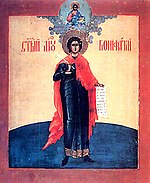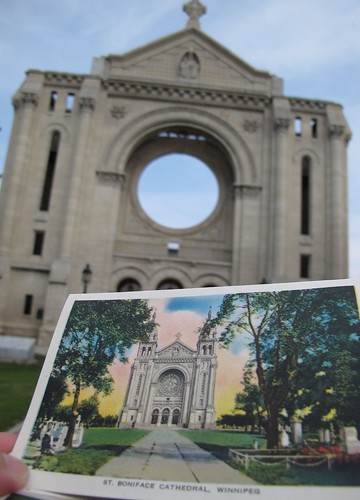
| Boniface of Tarsus | |
|---|---|
| Born | Third century Rome |
| Died | May 14, 307 Tarsus, Cilicia |
| Venerated in | Roman Catholic Church Eastern Orthodox Church |
| Feast | May 14 (pre-1969 General Roman Calendar); December 19 (Eastern Orthodox Churc |
| Attributes | Martyr |
Boniface of Tarsus was, according to legend, executed for being a Christian in the year 307 at Tarsus, where he had gone from Rome in order to bring back to his mistress Aglaida (also written Aglaia) relics of the martyrs.

Aglaida and Boniface (painting by Alexandre Cabanel)
Boniface was one of Aglaida's slaves. The name Aglaida is sometimes given as Aglae. Both were pagans and lived in debauchery together, some legends say they were even lover. Tiring of their way of life, both discover Christianity as a meaningful way. Aglaida decides to sent him on an errand to collect holy relics. Finding upon arrival at Tarsus that the authorities were torturing Christians, he openly declared himself to be a Christian. His own body constituted the relics that were brought back to Aglaida, who in turn became a Christian.
In his memory she constructed a church, which today is the Church of Santi Bonifacio e Alessio. She distributed her wealth to the poor and lived in a monastery for 18 years. She apparently received the divine gift to exorcise evil spirits.
 | |||||||
| St. Boniface Cathedral: Past & Present |
 |
| Fire in 1968 |
The original cathedral, built in 1908, was destroyed by fire in 1968.
photo: www.winnipegfiremuseum.ca